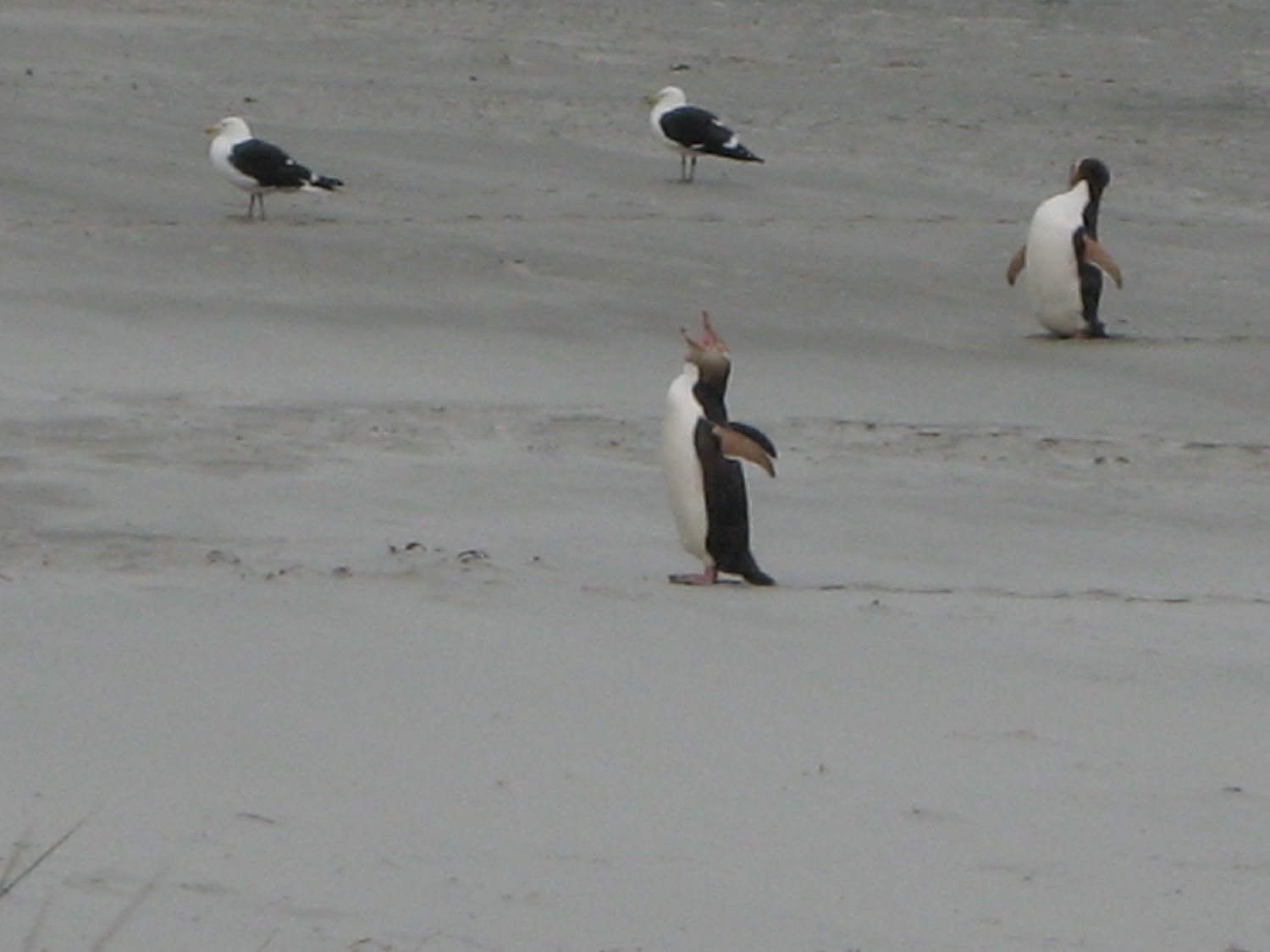
Yesterday we threw the budget out and splurged for our first tour in New Zealand. Actually, it was quite a bargain and worth every penny!
Stretching out from the Dunedin coast is the Otago Peninsula. As with much of the geography round these parts, it was formed by a volcano many, many, many years ago. At the very tip of the peninsula is the Taiaroa Head – home to the only mainland colony of Royal Albatross in the world. During our visit to the Southland Museum in Invercargill (aka Invercrappy per Dave’s post), we saw three of these massive birds on display. (They had been unfortunate enough to meet with the wrong side of a fisherman’s net.) It took a few minutes to really grasp what I was seeing. These birds are unbelievably huge. They were so big, it was almost cartoonish. To add to the experience, the display also had a rather creepy recording of the calls they make. I could have lived without that. Either way, after seeing them stuffed, we were curious to see these creatures live and in flight.
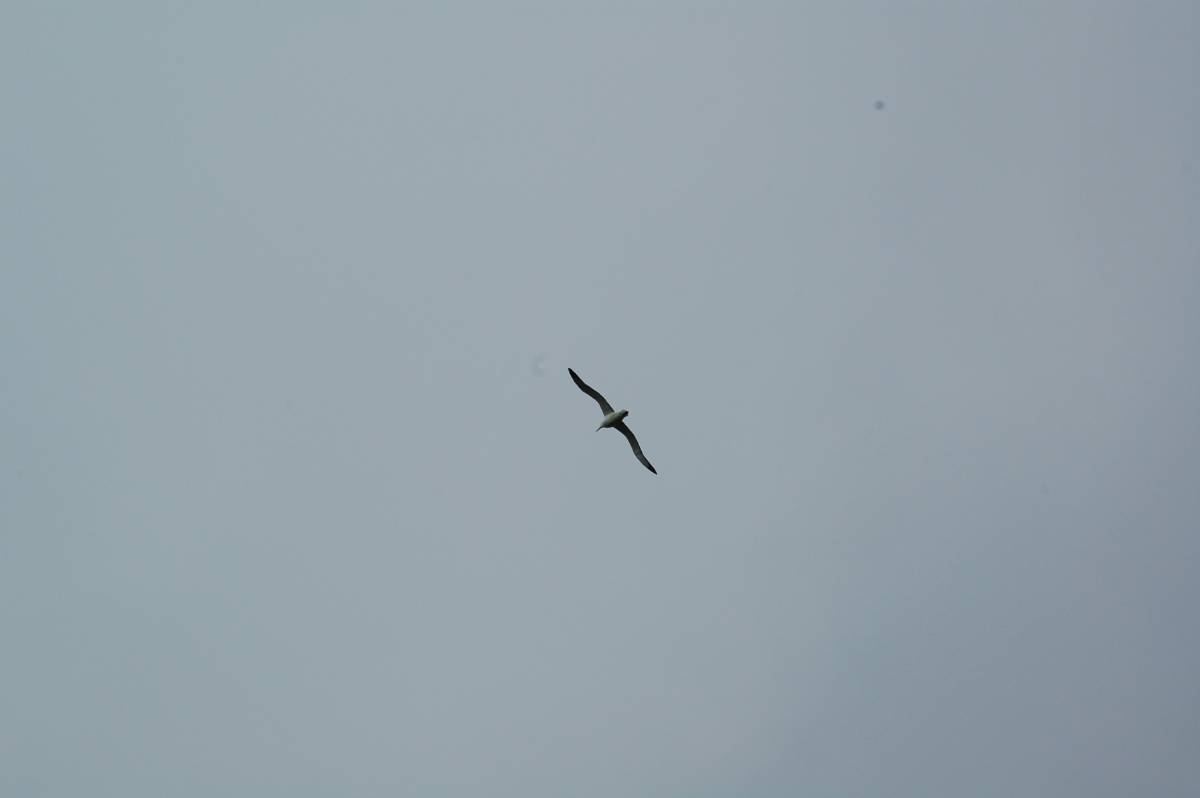
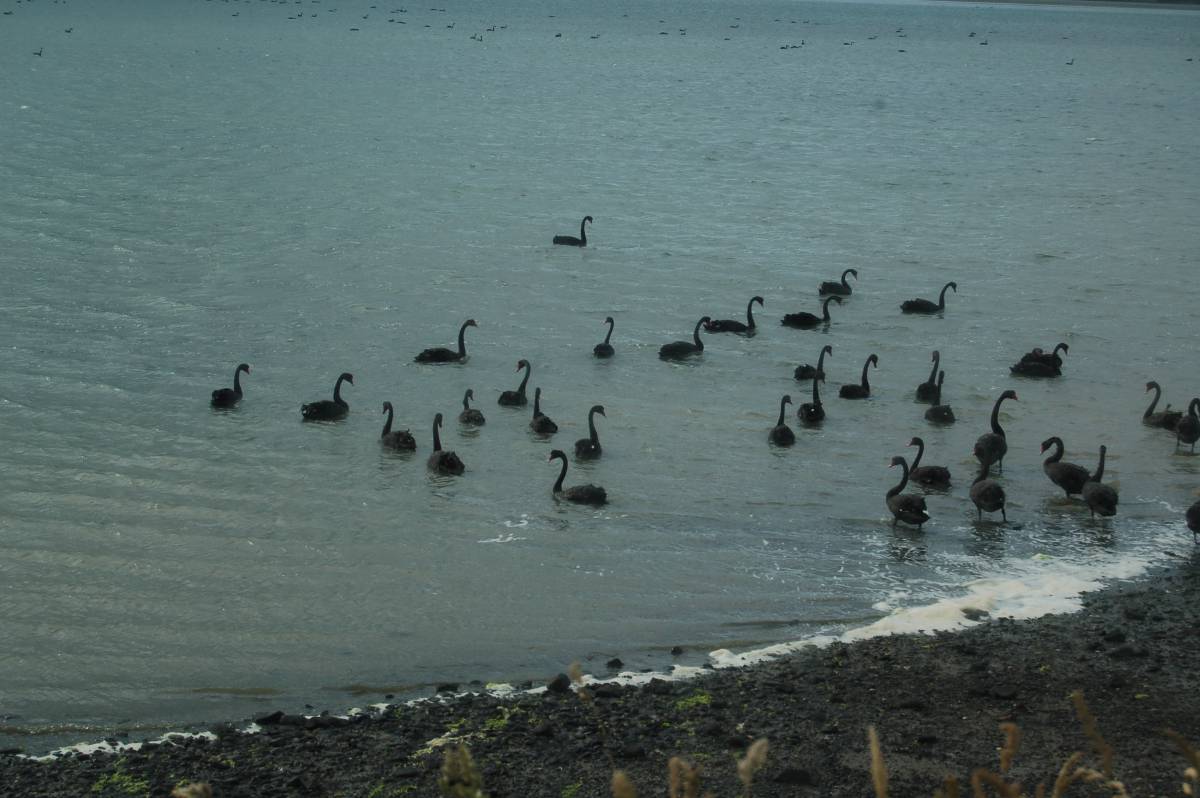
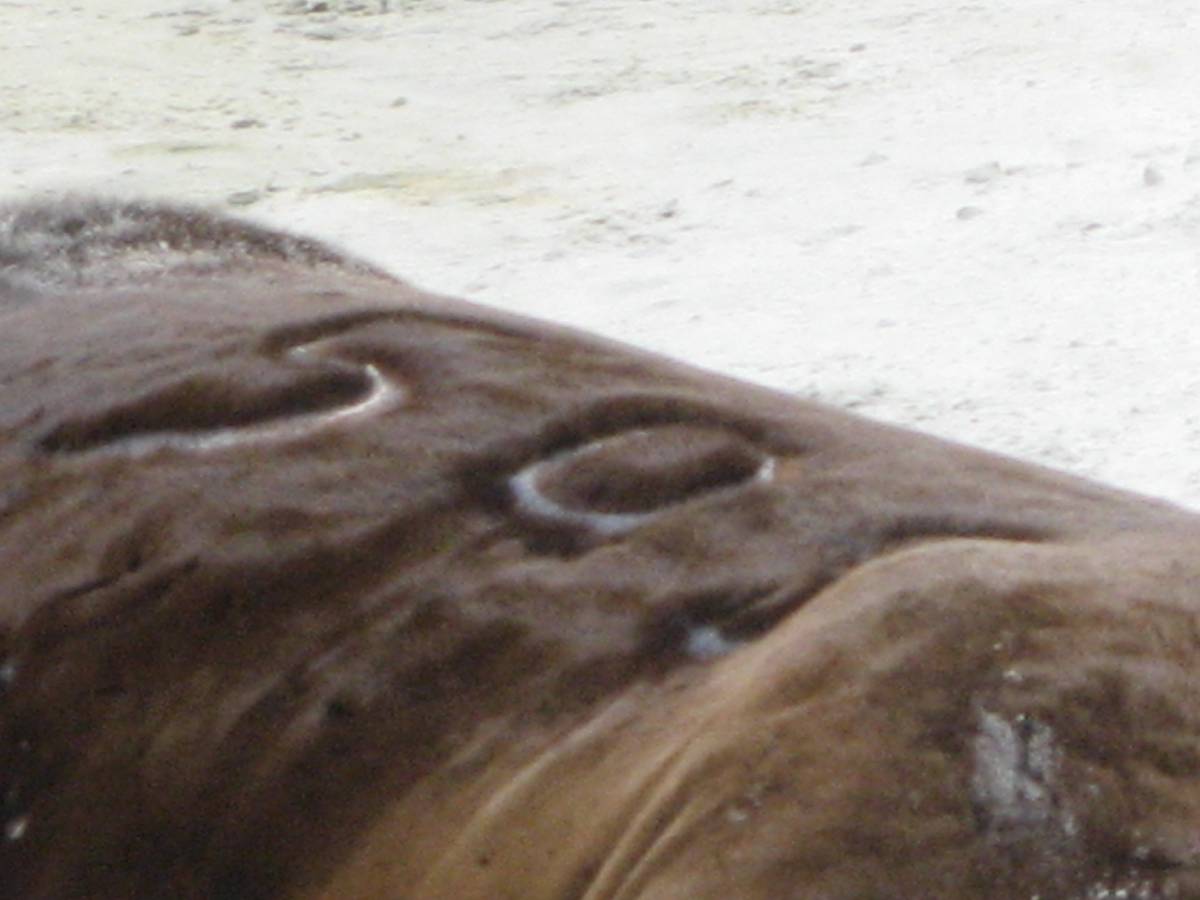
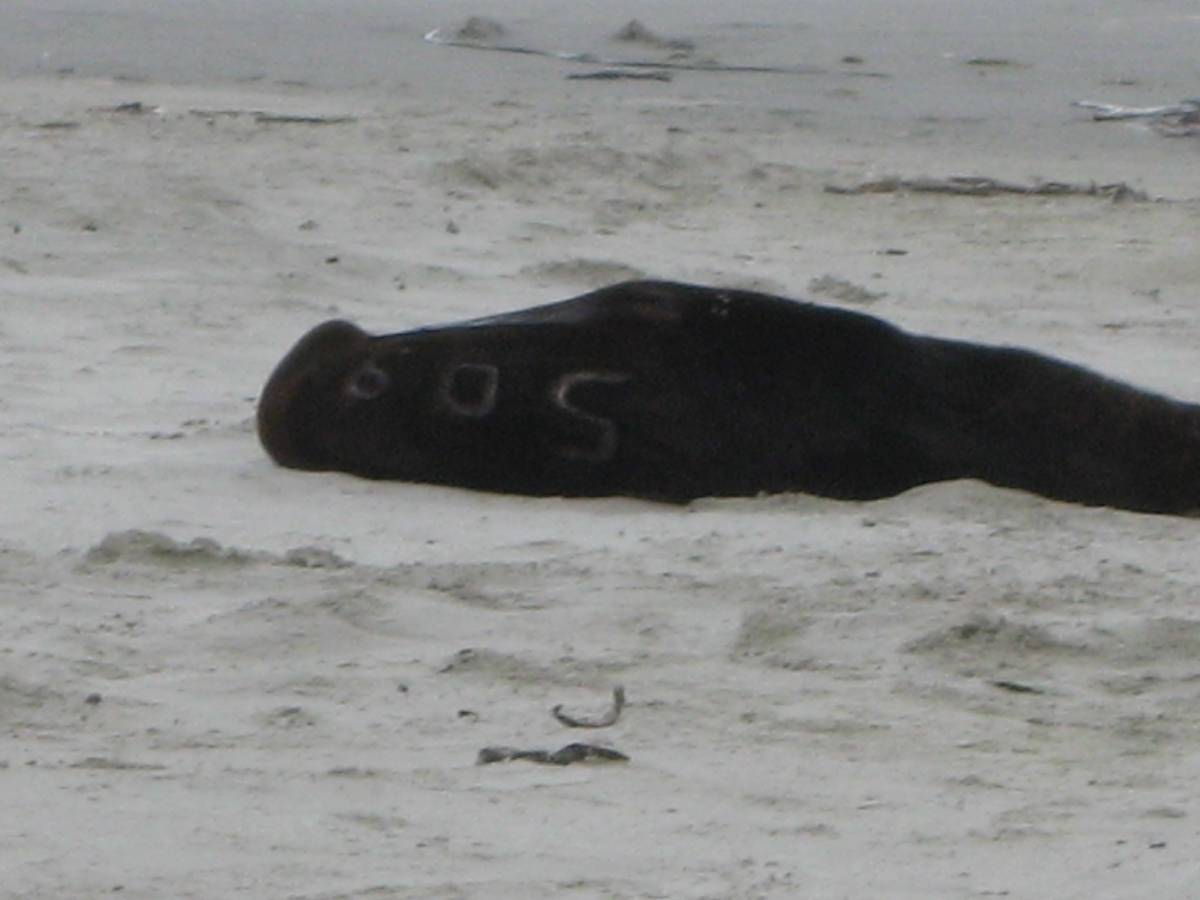

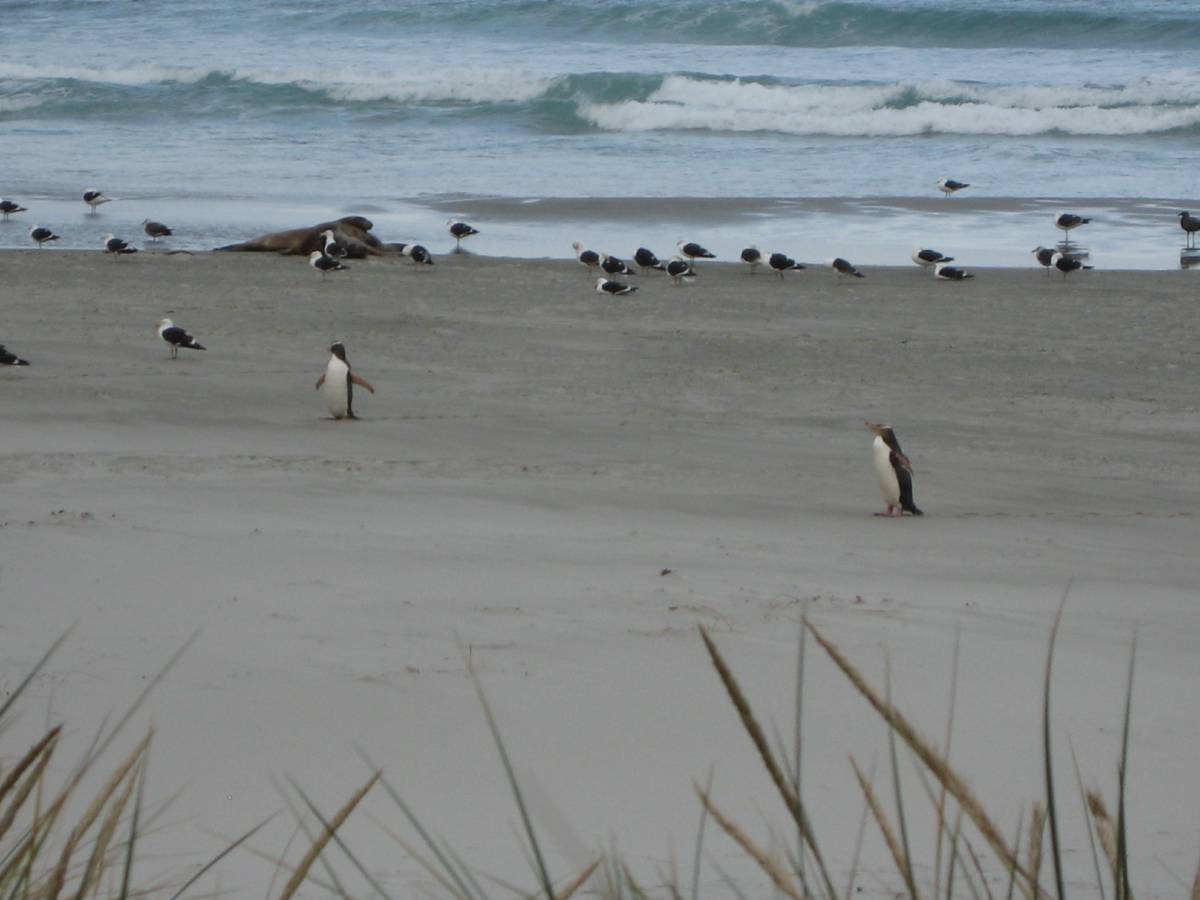

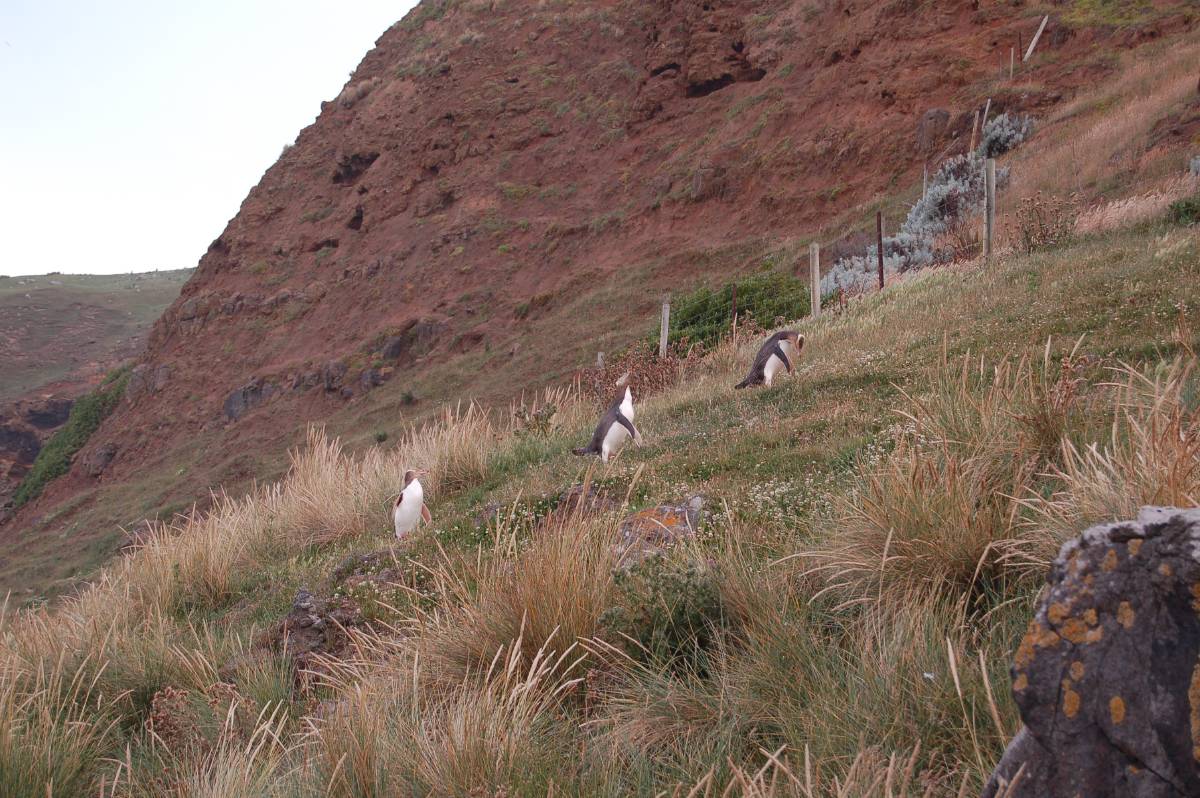
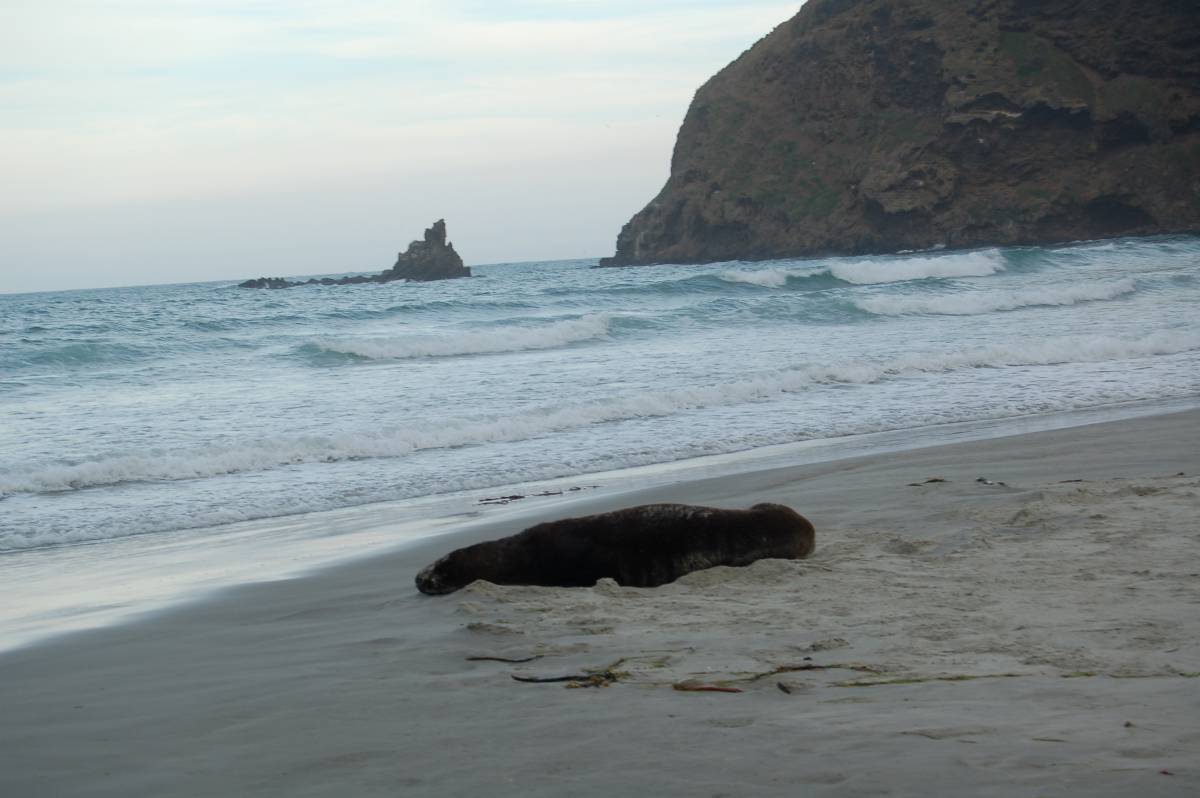
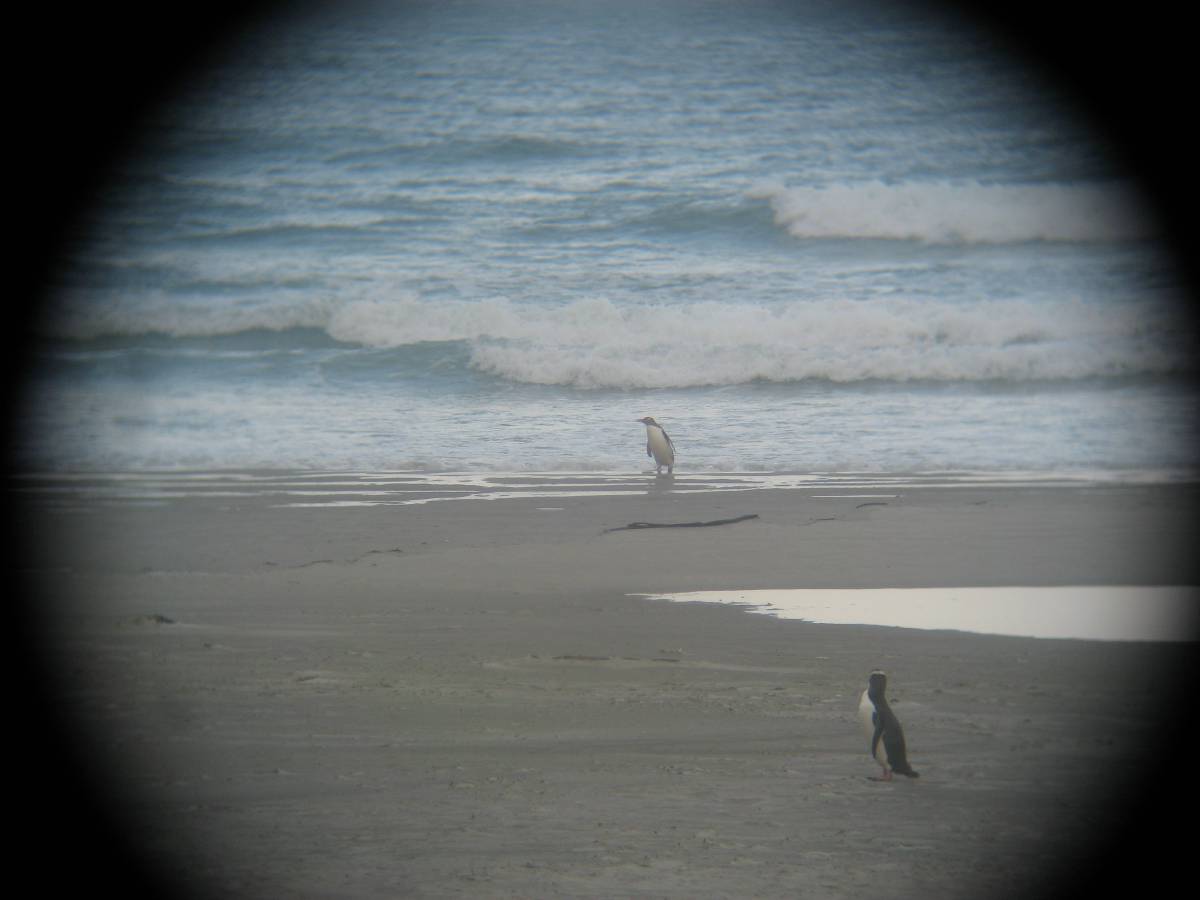
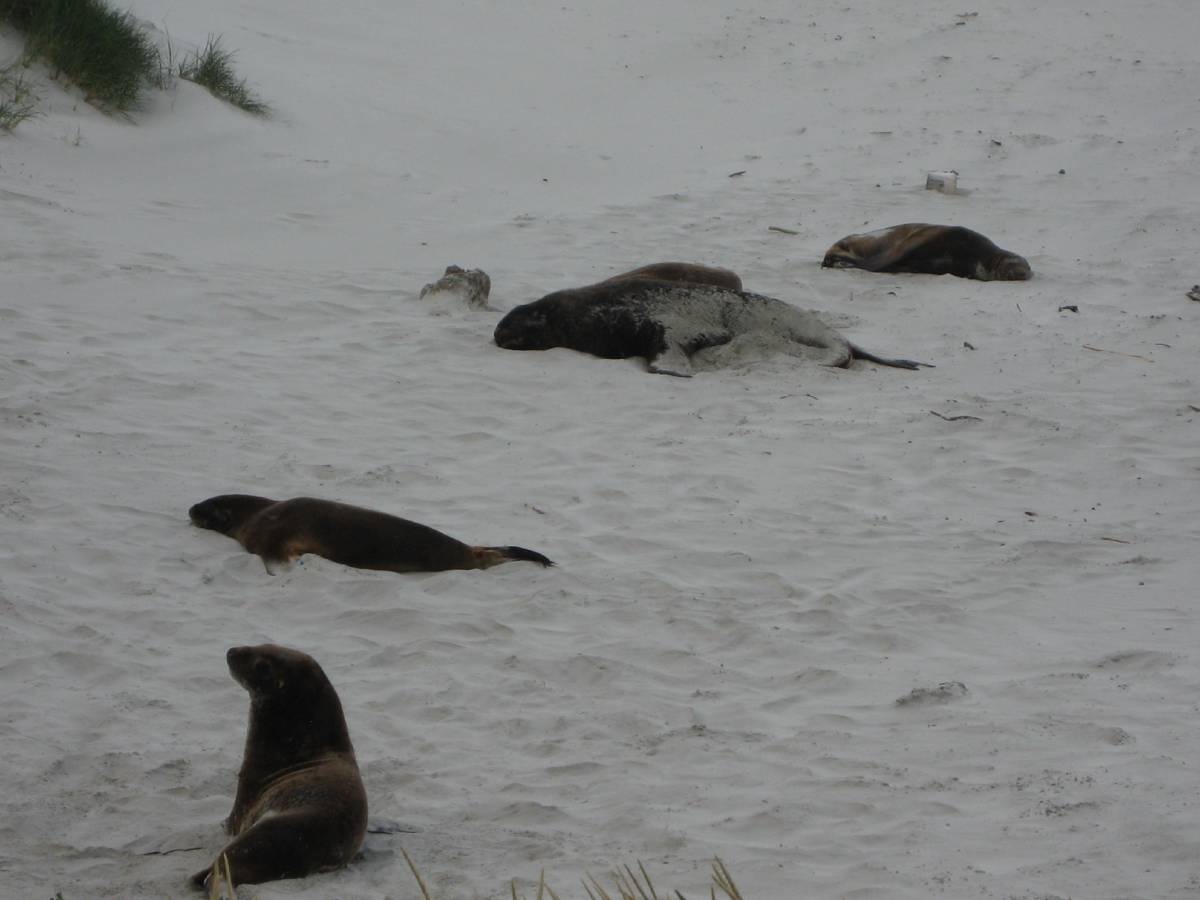
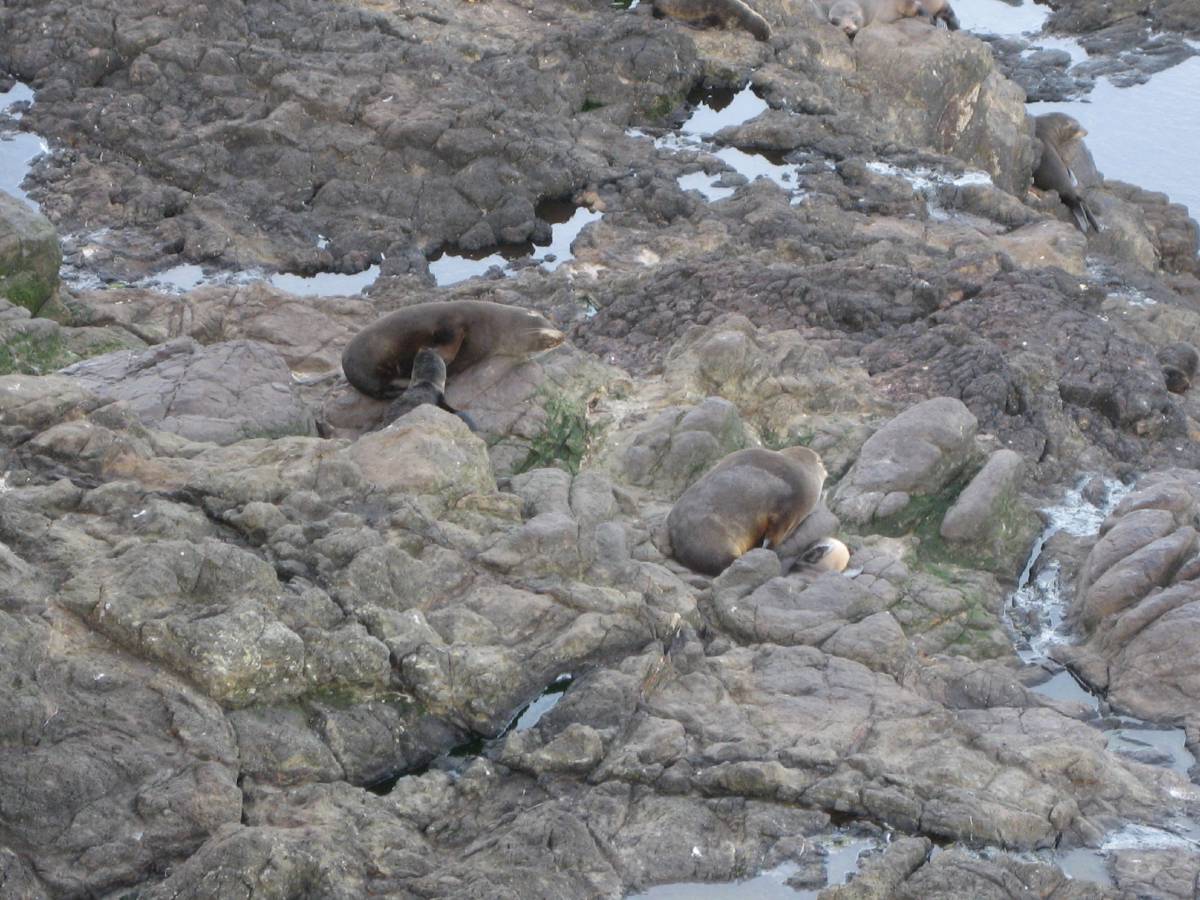
The Elm Wildlife Tour was recommended to us by the friendly Kiwi managing our hostel. They have a backpacker rate (excellent!) and in addition to driving you to the albatross colony will take you to a reserve that they manage to see other cute little Kiwi critters up close and personal.
For a brief minute, Dave and I considered riding our bikes out to the center along the coastal road, but after the previous day’s hike-n-bike up Three Mile Hill, I was more than happy to take a bus! Once we saw the crazy, narrow, windy road, we were especially happy with our decision.
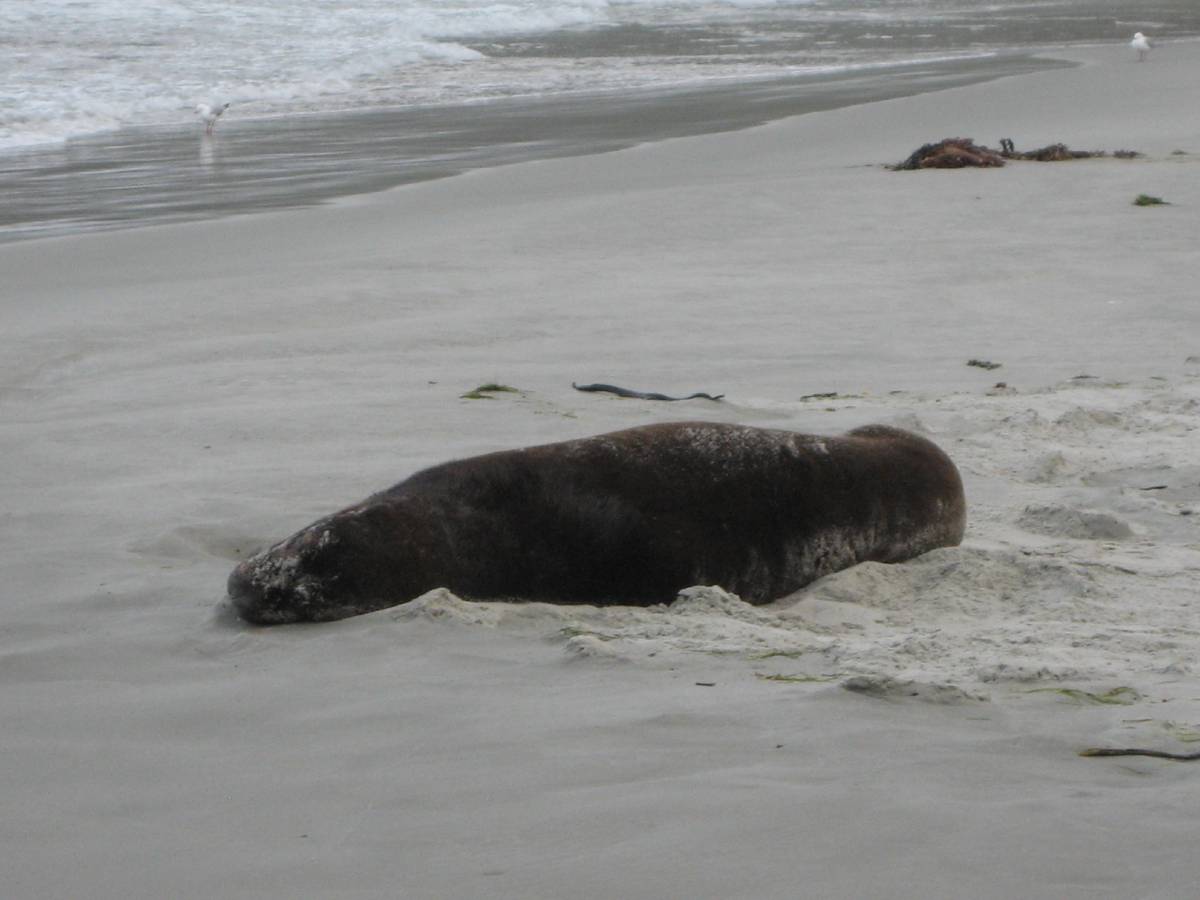
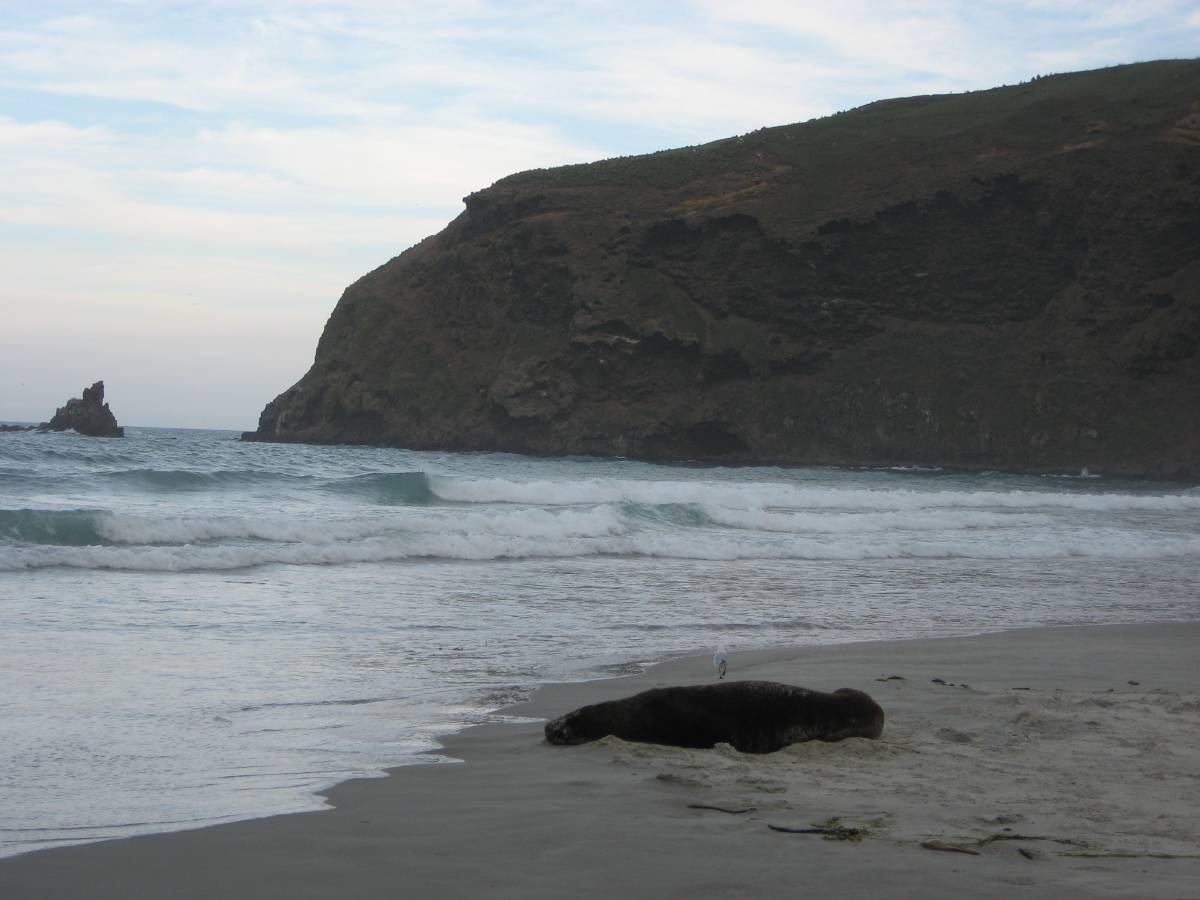
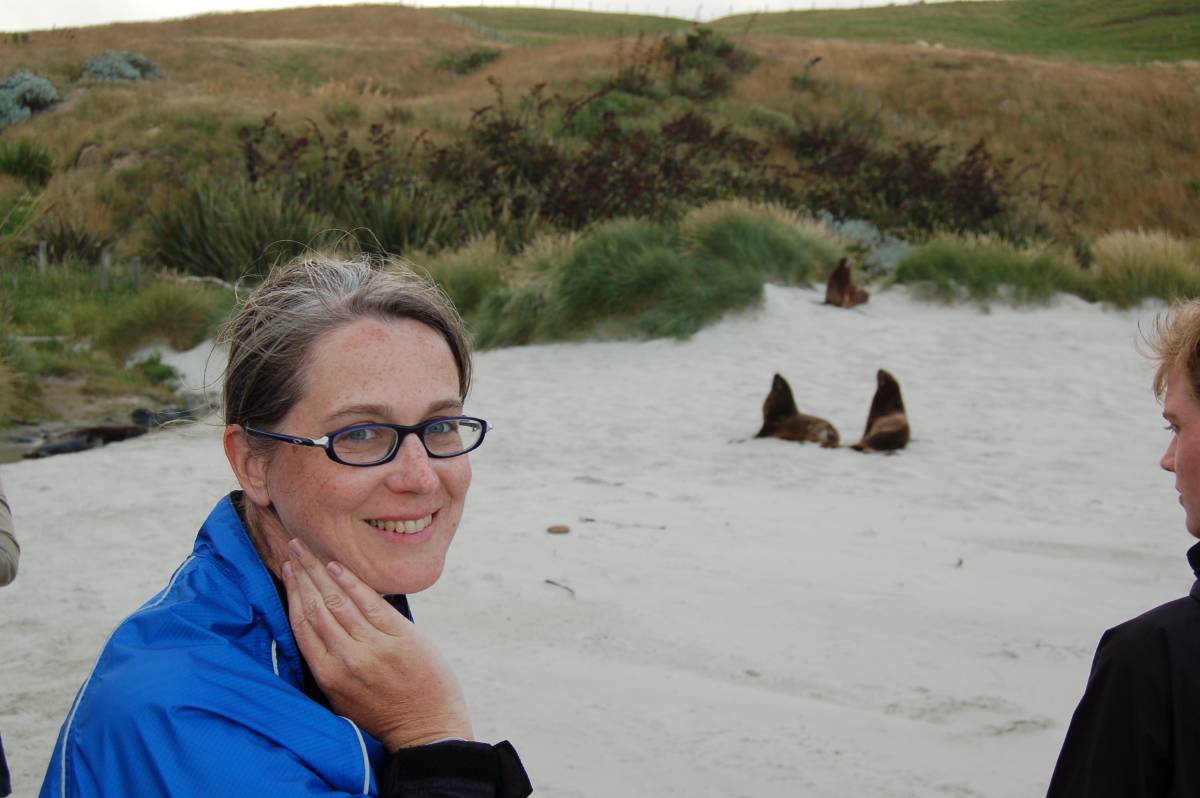

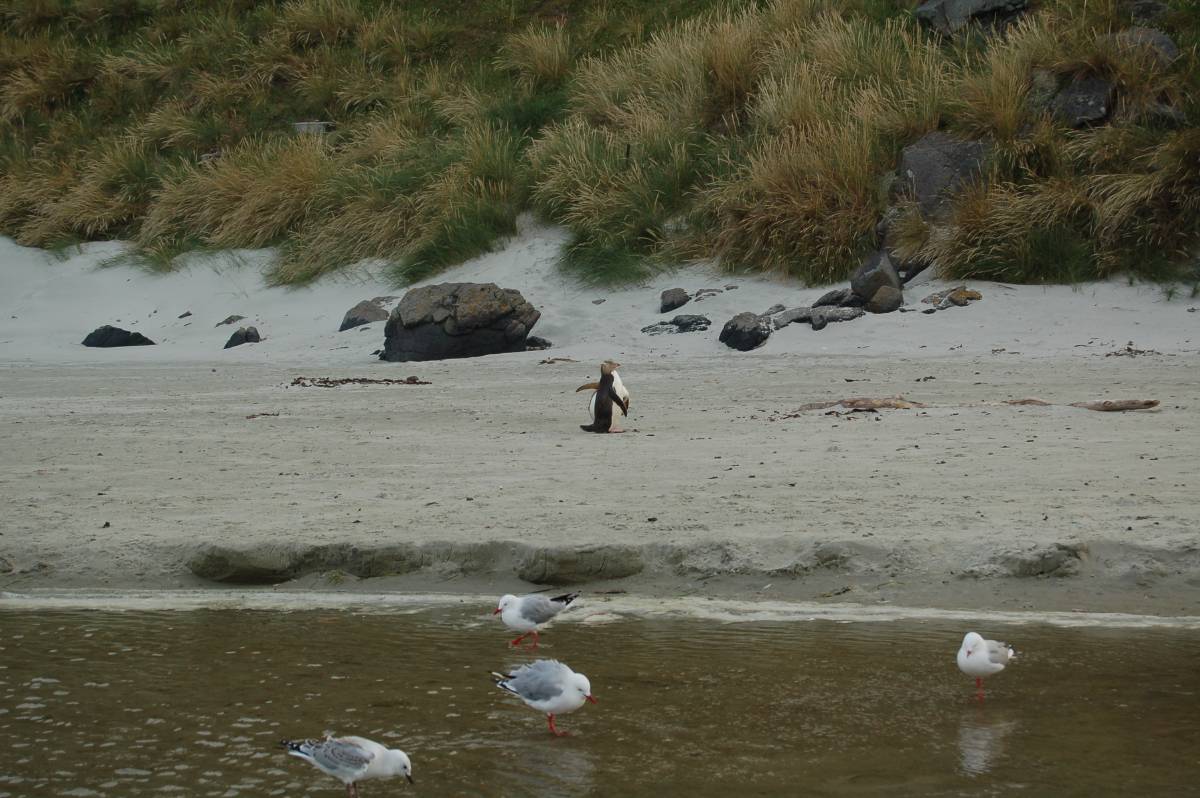


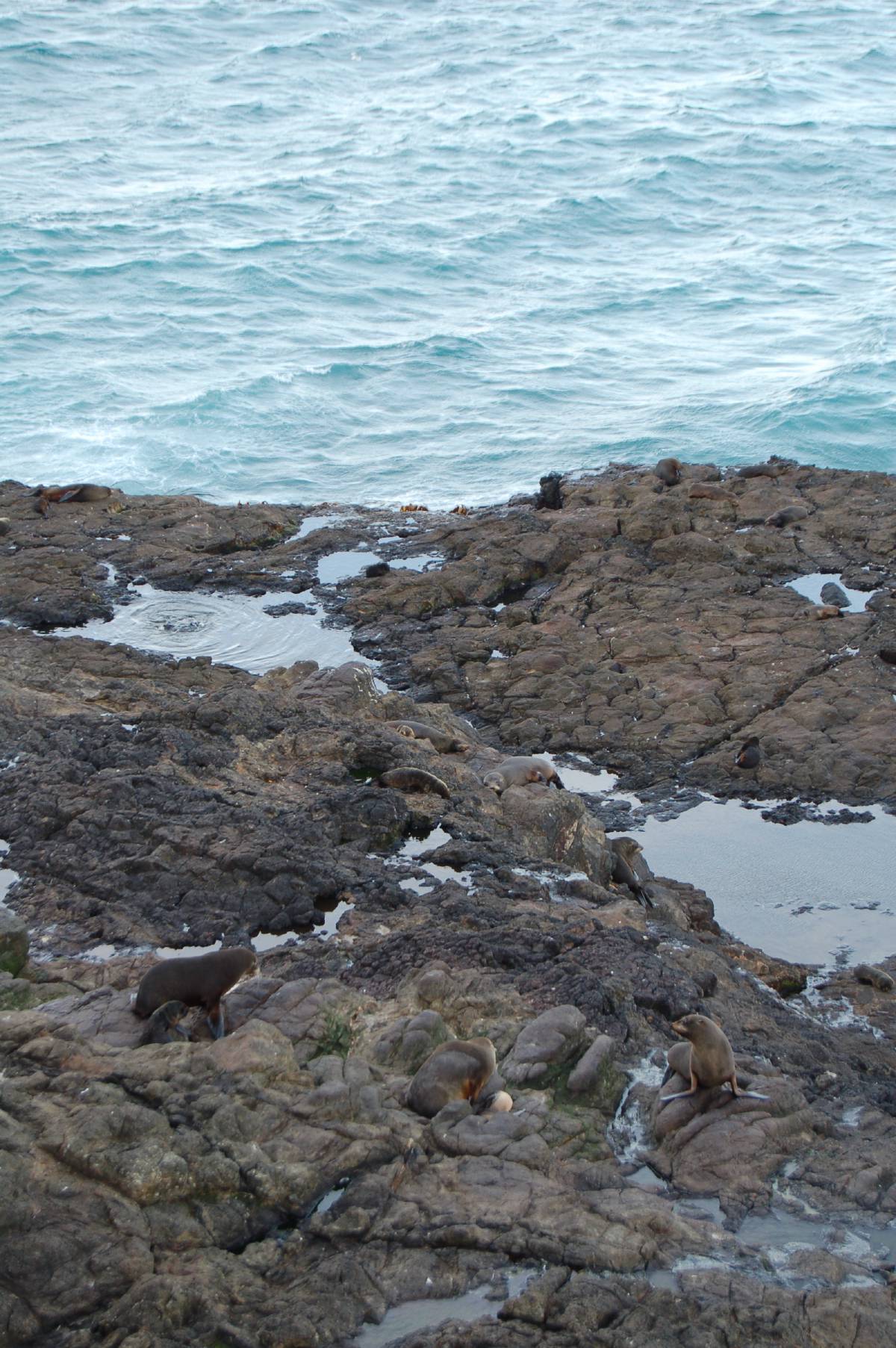
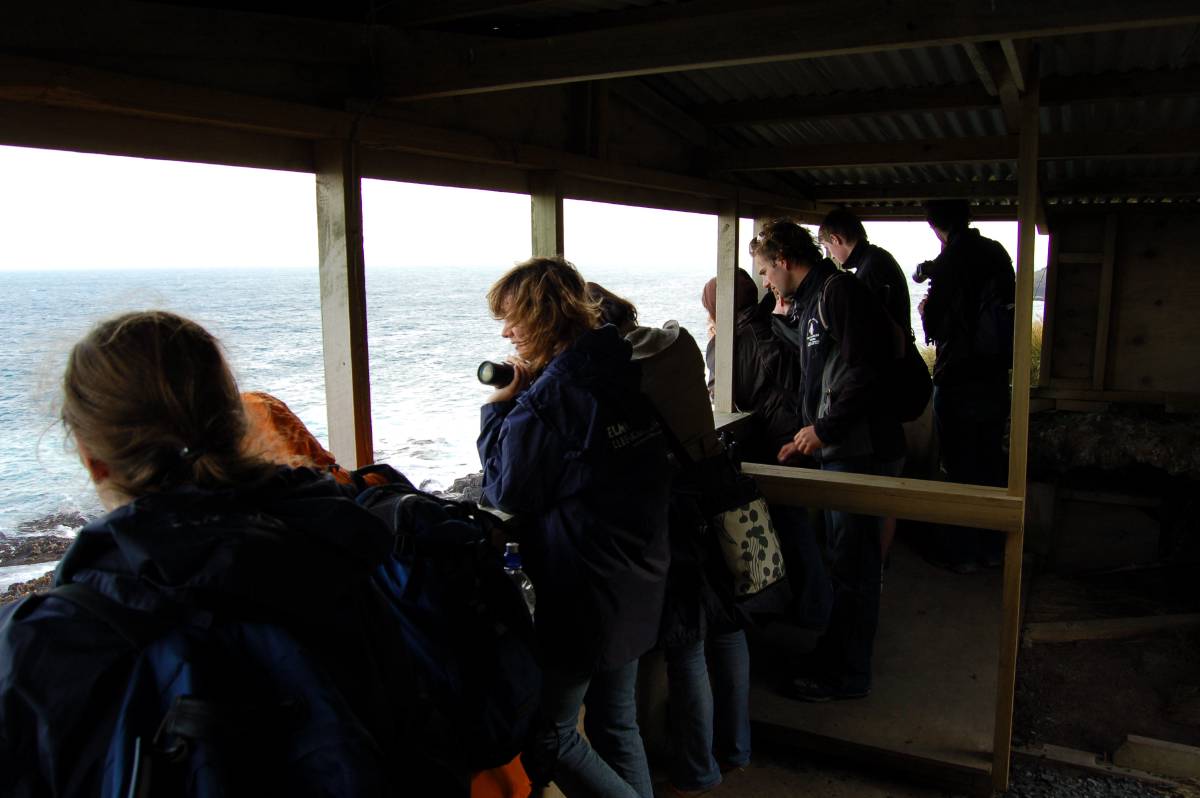
First stop was the Royal Albatross Center. According to the guides, you have a pretty good chance of seeing them in flight when it’s windy. Funny, I understood windy to be a permanent weather condition here, but perhaps I am mistaken. As we pulled into the parking lot, an albatross was flying overhead. Really awesome!
The Royal Albatross is the largest of the world’s seabirds. It can measure up to 1.2 meters and has a wing span of 3.3 meters. They are incredibly efficient birds using the wind like a glider to carry them for thousands of miles out to sea before returning back to breed. Though there were many seagulls and spotted shags (quite a nice bird as well) roosting along the cliffs and flying overhead, it was easy to tell the albatross by its size of course and by their glide. They really soar on the wind. No flapping necessary.
After gawking at these surreal birds and watching an entertaining sea-lion in a fish feeding frenzy in the bay below us, we boarded our little bus and set off for their private reserve on the eastern side of the peninsula. Along the way we spotted black swans, pukekos (a deep blue bird also known as a swamp hen), pied stilts, white faced herons, black-backed gulls and little shags.
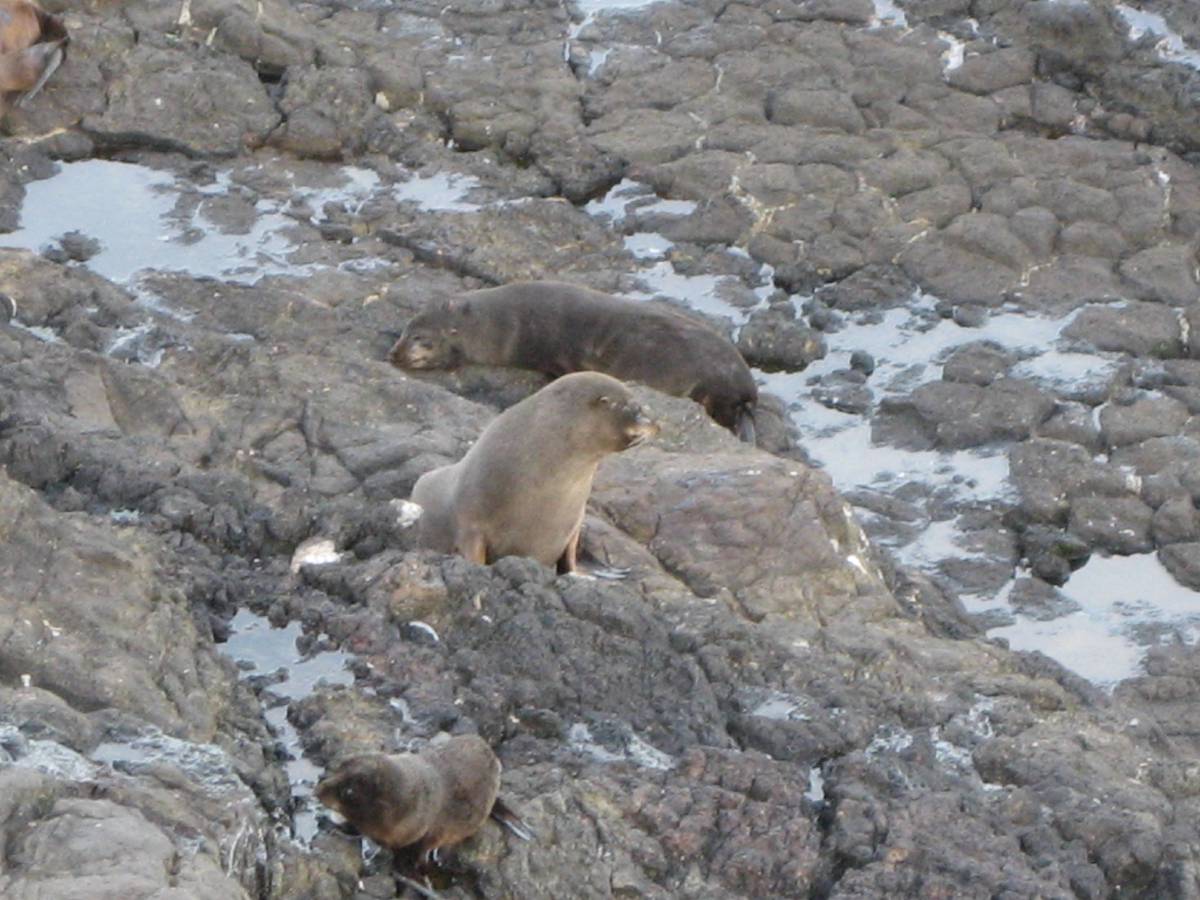
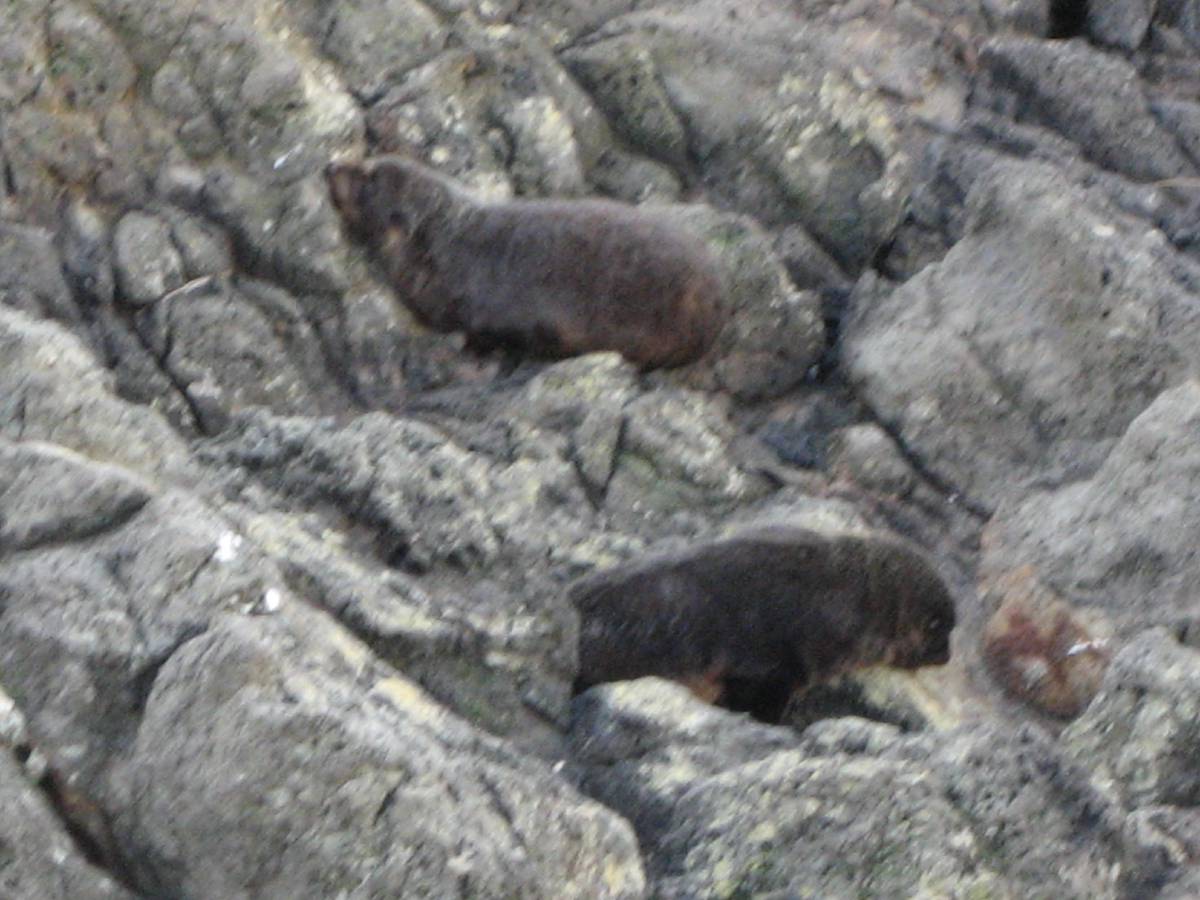
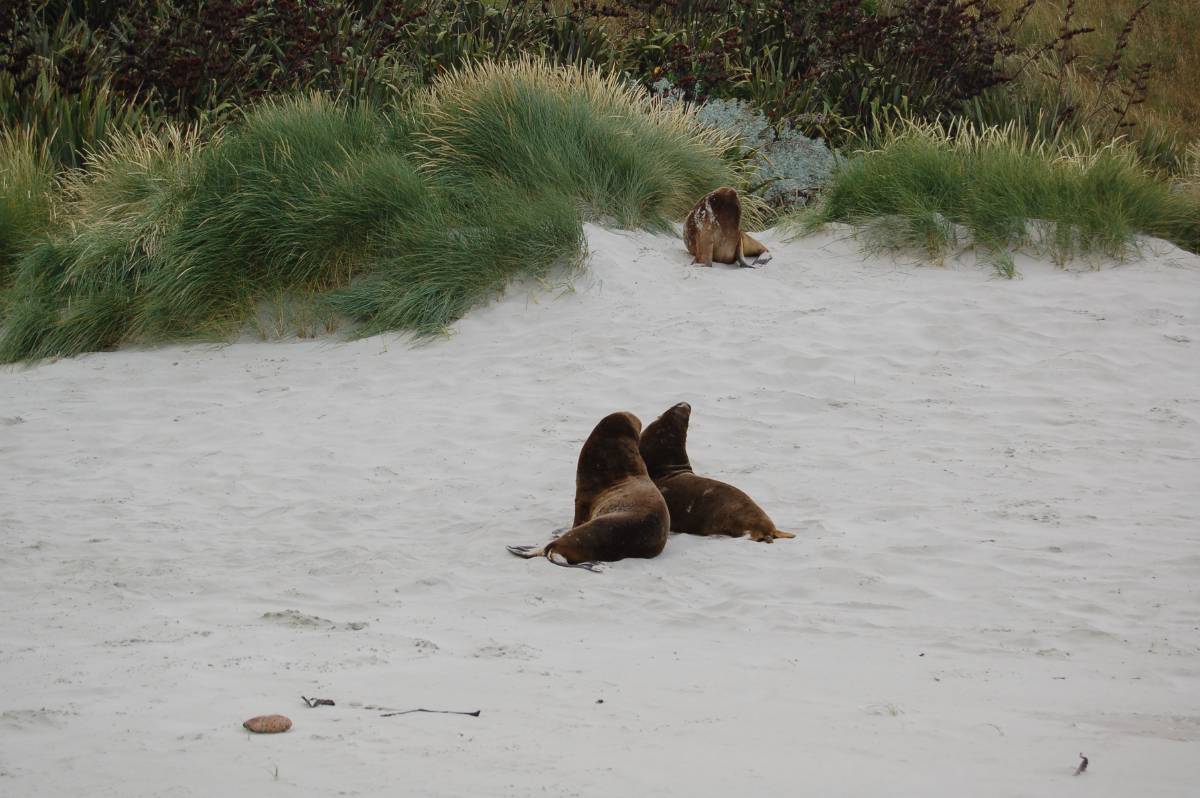

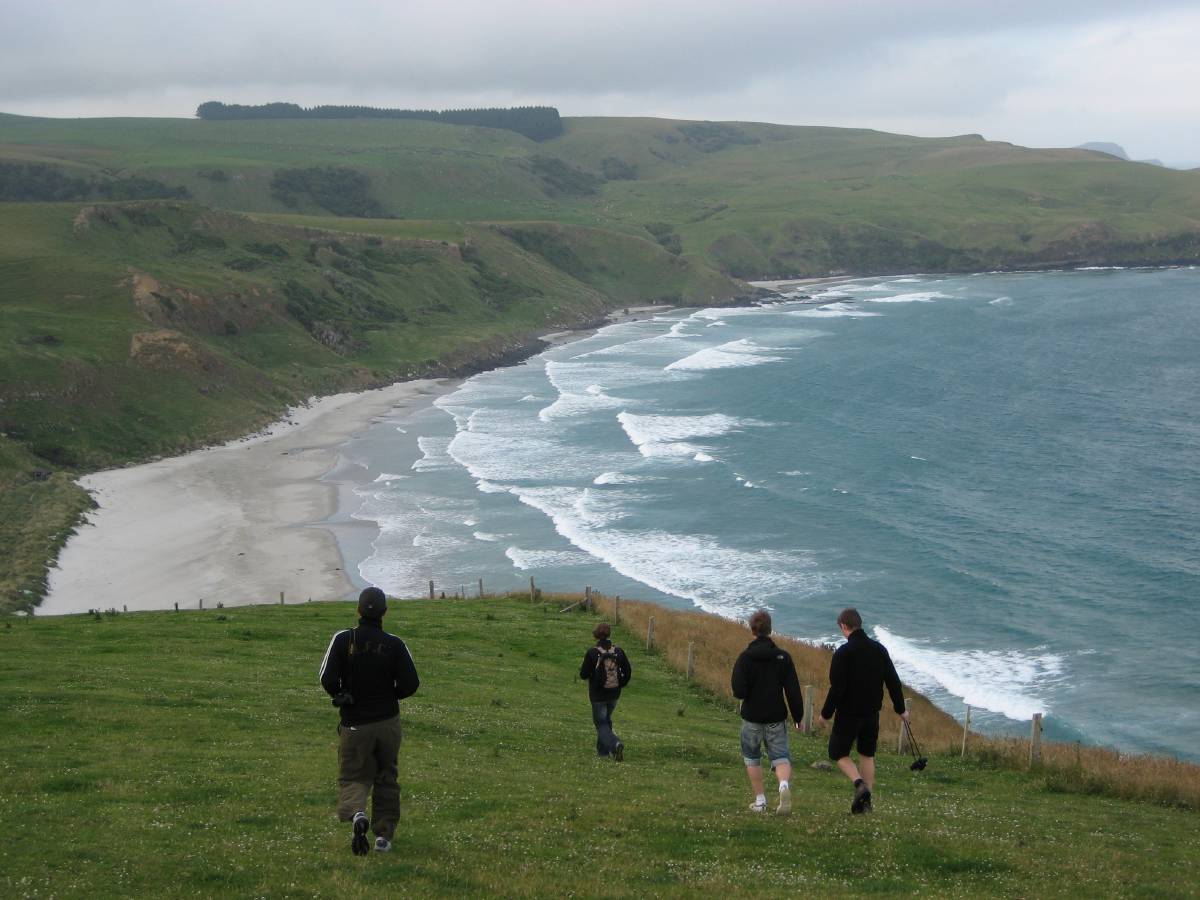
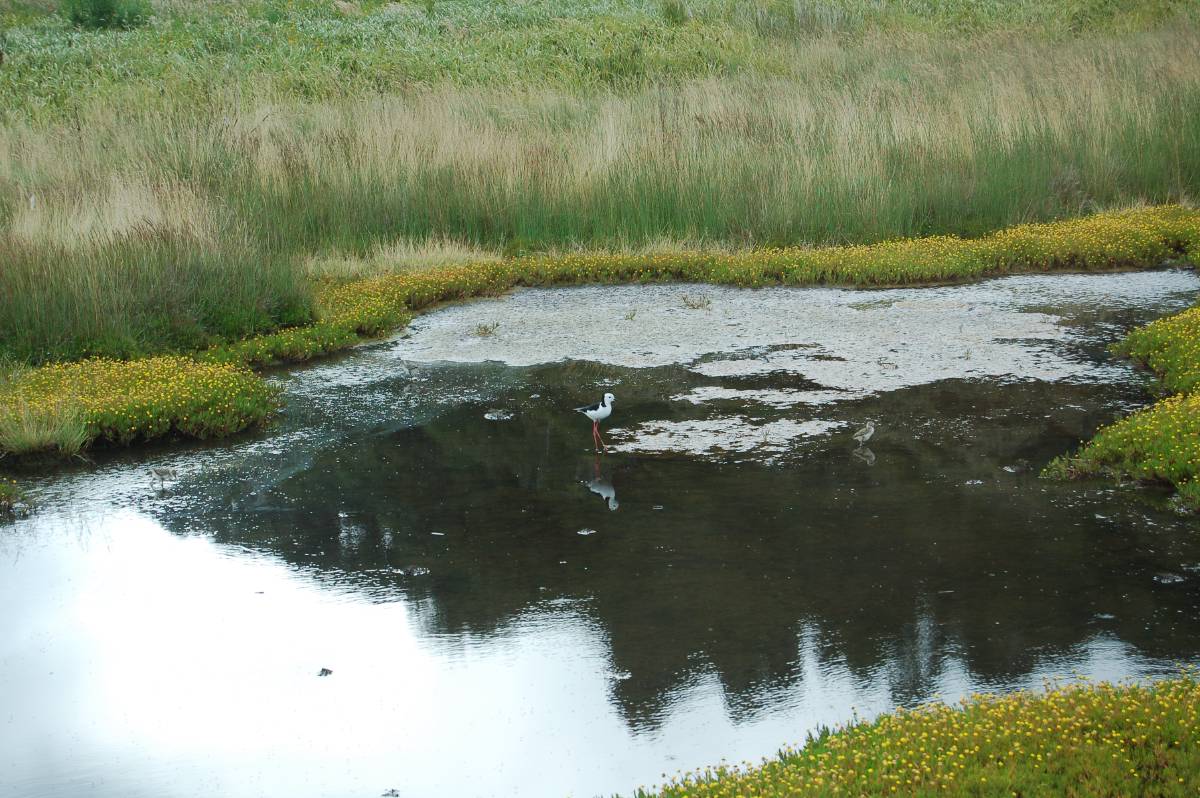
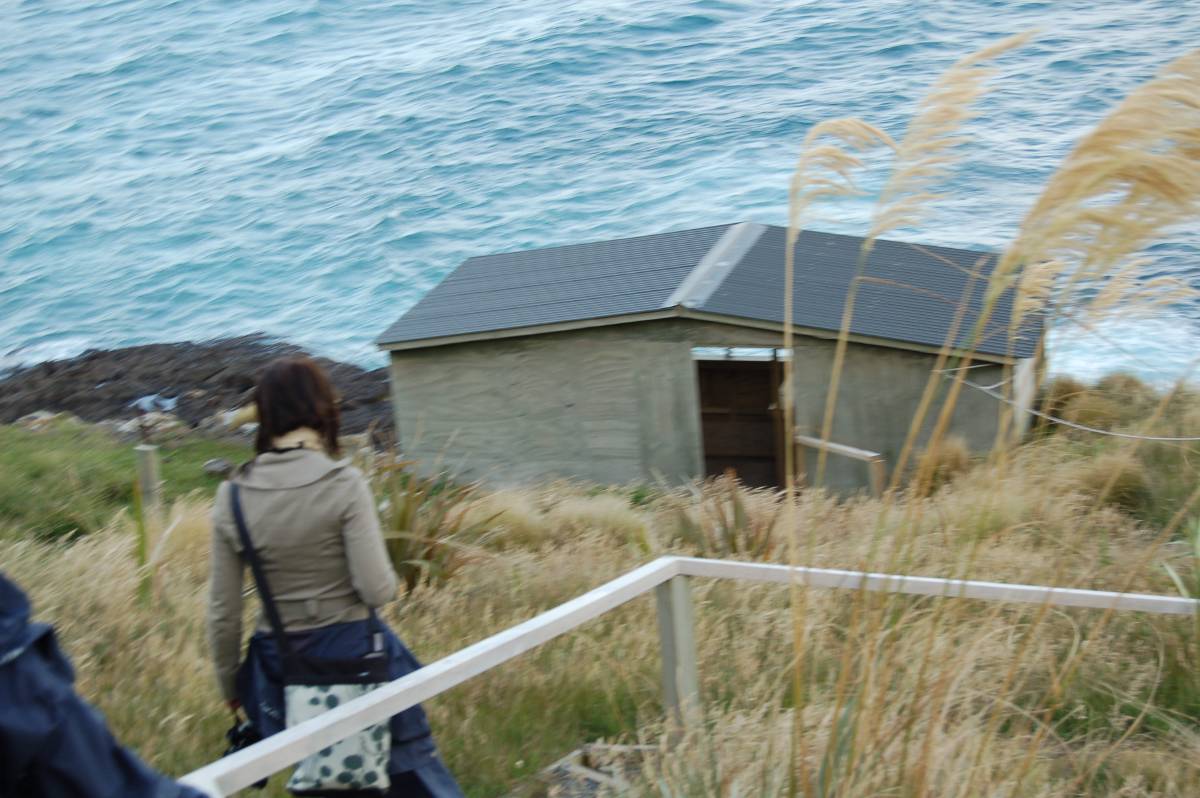
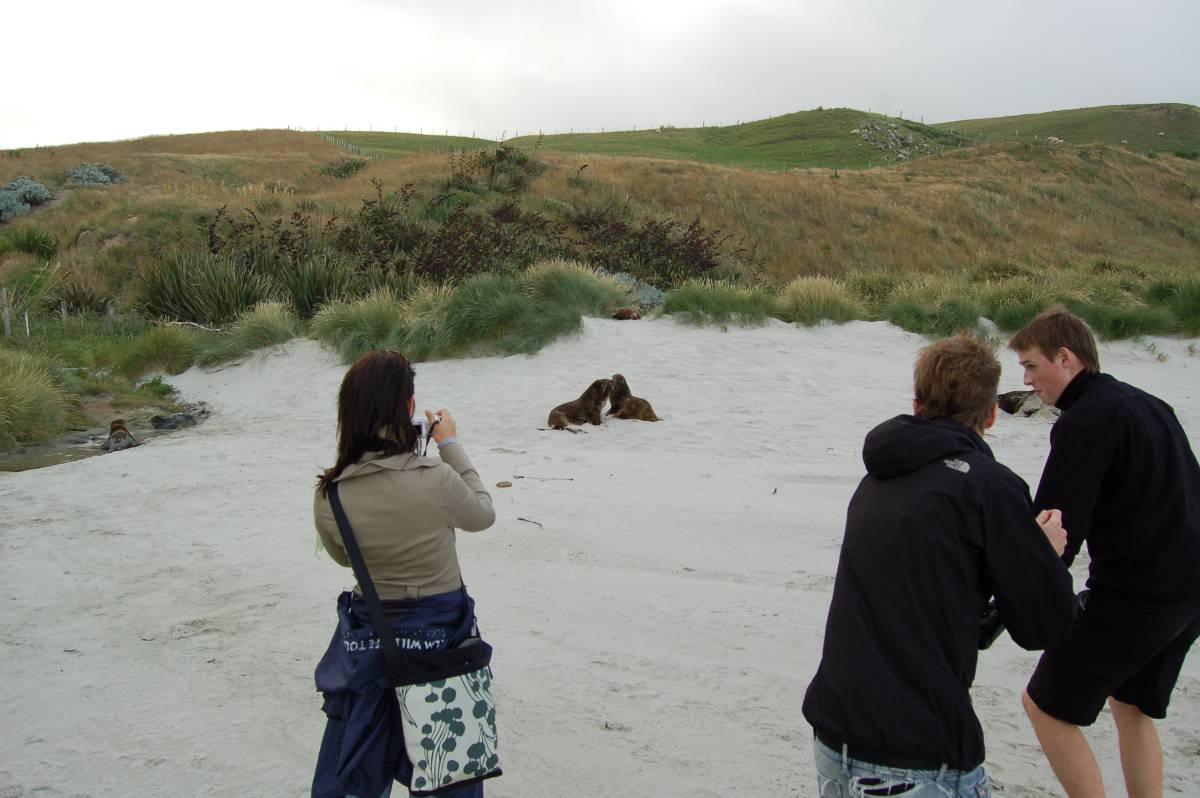

Our group of about 8 folks went with one of the guides down a rather steep hillside to a viewing hut just above a colony of New Zealand fur seals lounging along the rocky shore. We observed the females with their pups playfully splashing in the pools. Very cute. The hut was set up to view them from a comfortable distance, as the fur seal doesn’t take to kindly to people getting too close. Fortunately for the fur seal, they have been recolonized quite successfully and have seen a population increase after being hunted to near extinction by European seal hunters in the previous century.
After hiking back up the windy headland, we ventured down the other side to a beach where we walked right up to a group of sleepy Hooker sea-lions. The Hooker sea-lion is the rarest of the world’s five species of sea-lions and are endemic to New Zealand. They are apparently making a comeback after being eliminated by Maori hunting centuries ago. Unlike the fur seals, these guys like company and are known to be gregarious. Our guide had studied the sea-lions for his masters degree and was very diligent about preventing any of us (like the two mischievous German boys) from getting too close. When asked what they would do, he said that they would most likely just run at you to see you run, but their bite can leave a nasty bruise. You might think you could just outrun one of these big, lazy looking guys, but think again! They can run up to 20kph. No worries mate! These guys were busy resting up for a night of prowling the ocean waters.
Further down the beach, we could see a wee little yellow-eyed penguin making his way onto shore. We walked down the beach and were able to observe the penguins from a few viewing huts. Like the fur seals, these guys are a little on the nervous side. Who can blame them? The big guys down the beach would be happy to have them for dinner.


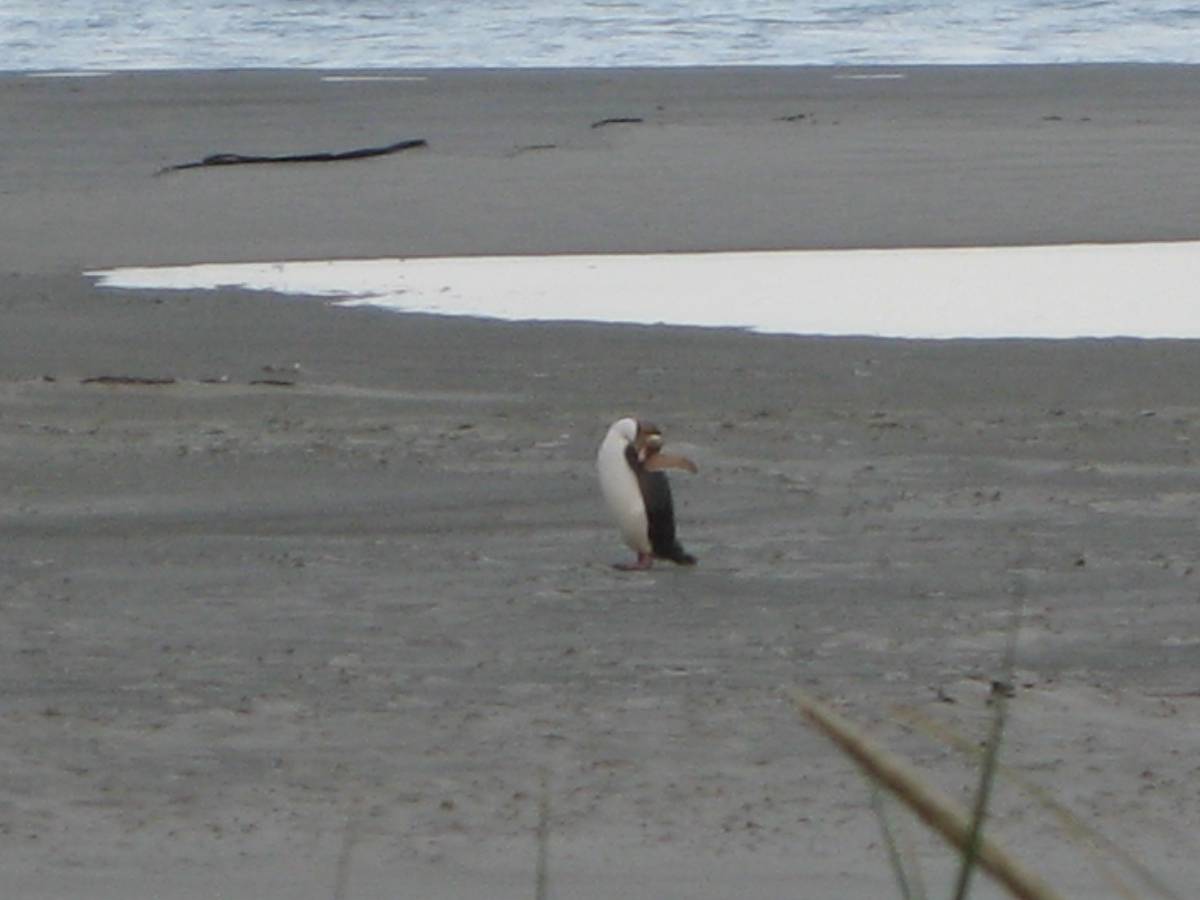
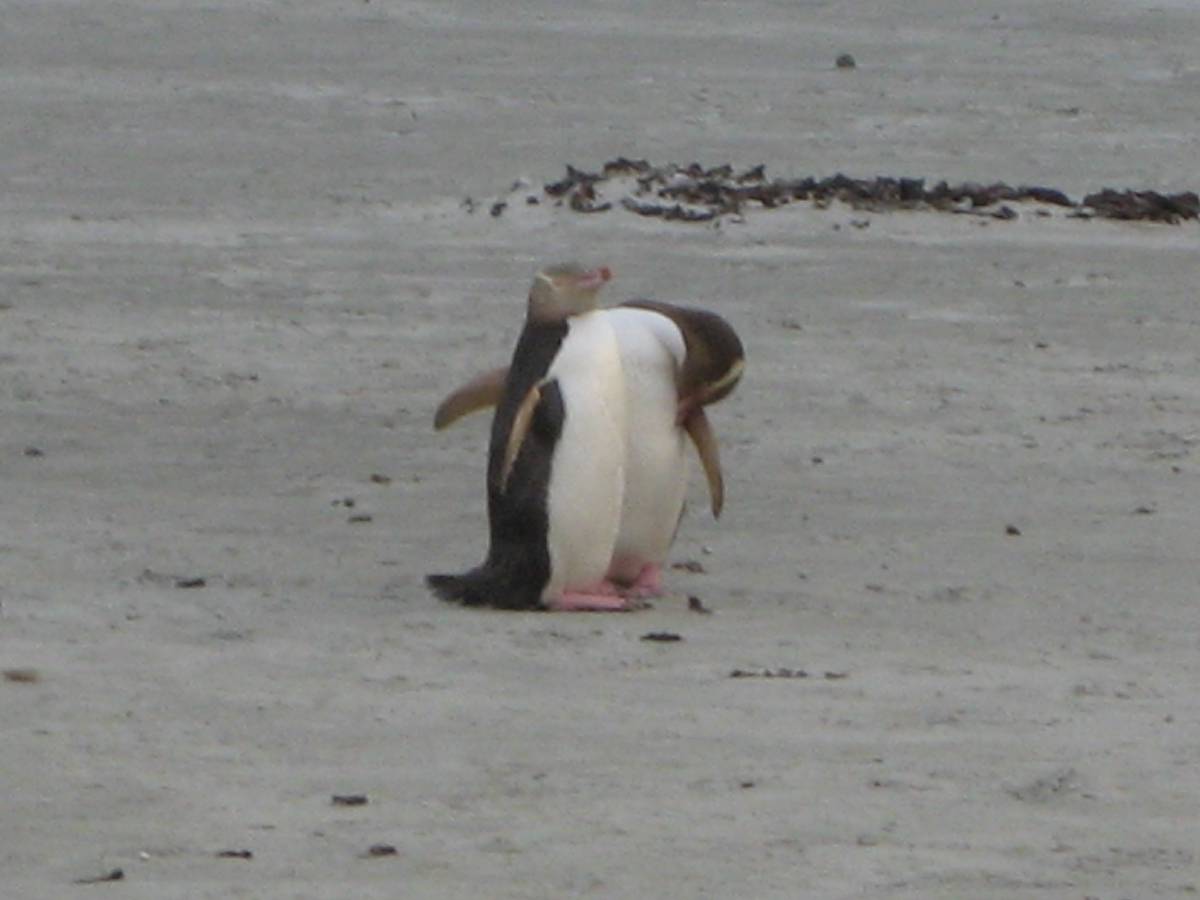
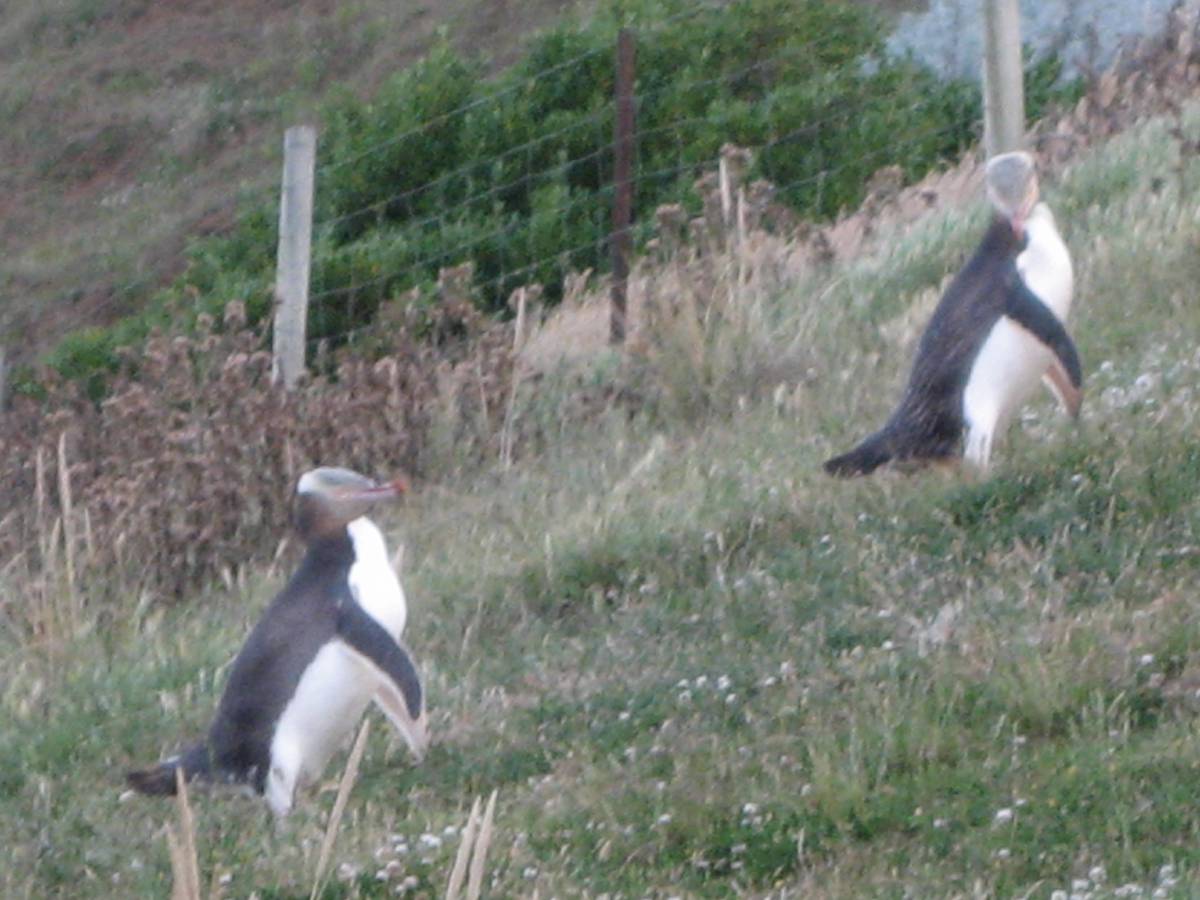

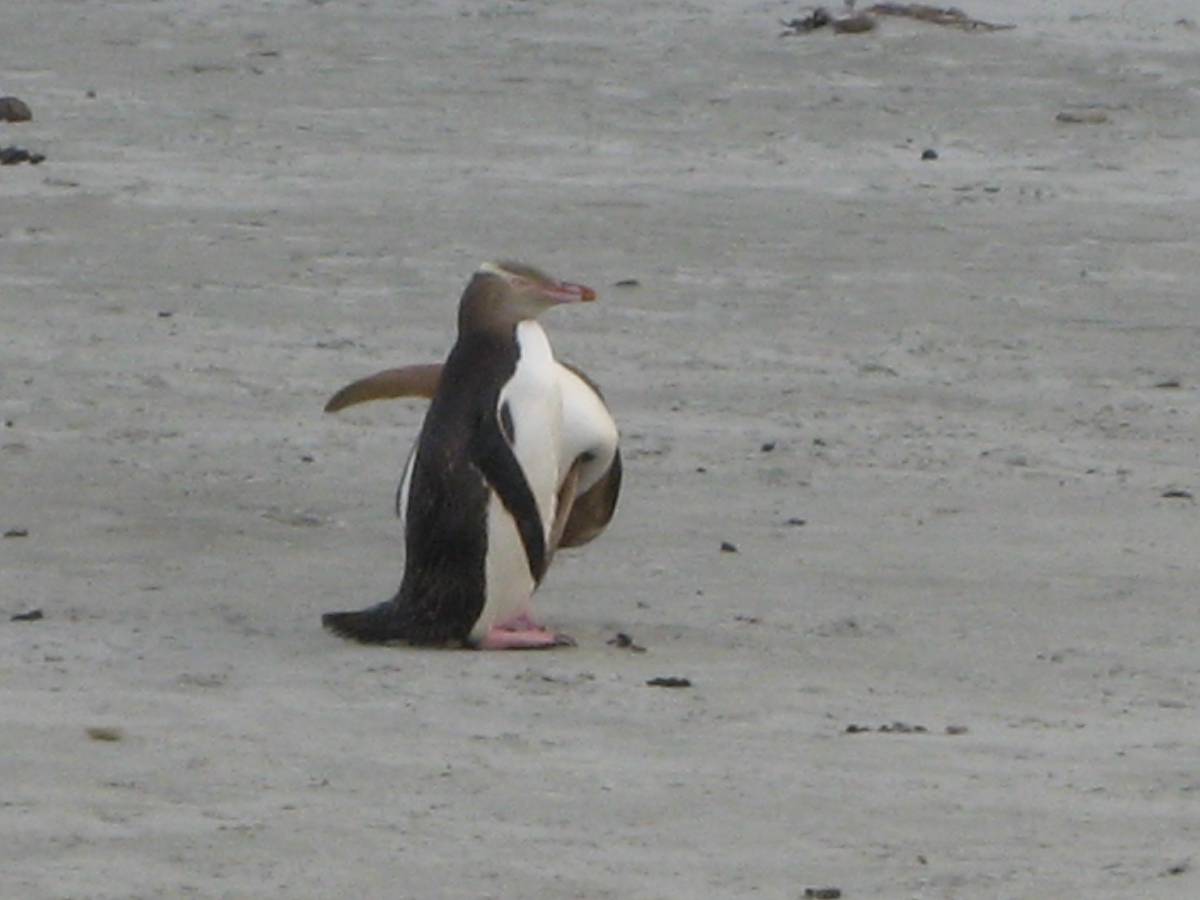

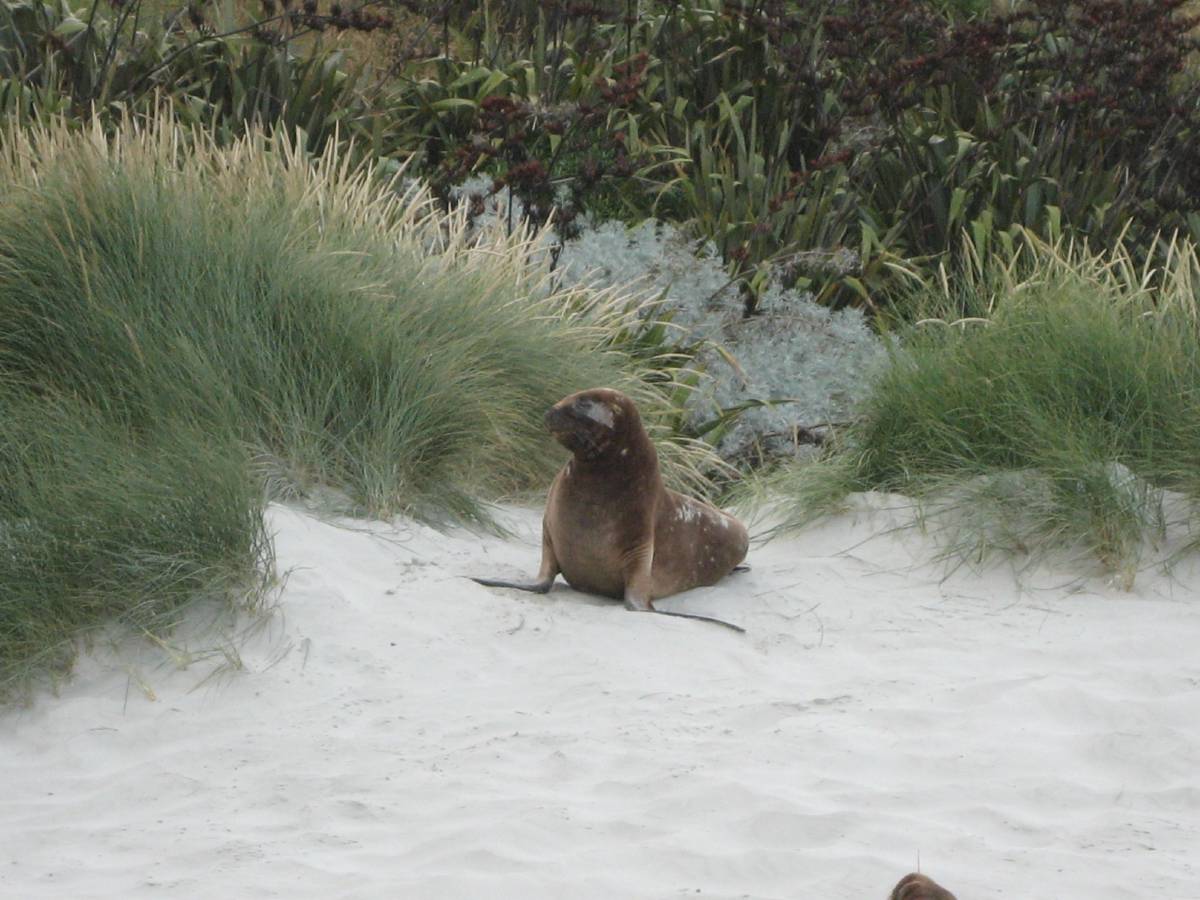
We watched as slowly, one by one, the penguins popped out of the water and waddled over to the hillside where they would hop and jump their way to the nest and chicks they had left behind that morning. Yellow-eyed penguins are the rarest of the world’s 18 species of penguins and also found only in New Zealand. They were named Hoiho or noise shouter by the Maori for the loud, distinctive call – which we were fortunate to hear a few times. They nest in coastal vegetation and forest where they can hide from their neighbors. According to our guide they can swim 15 – 20 kilometers out to sea and then back again each day. You have to wonder how they know how to get home. Quite amazing creatures!
Not every day you can see rare animals up close in their own habitat. All in all, pretty awesome day!